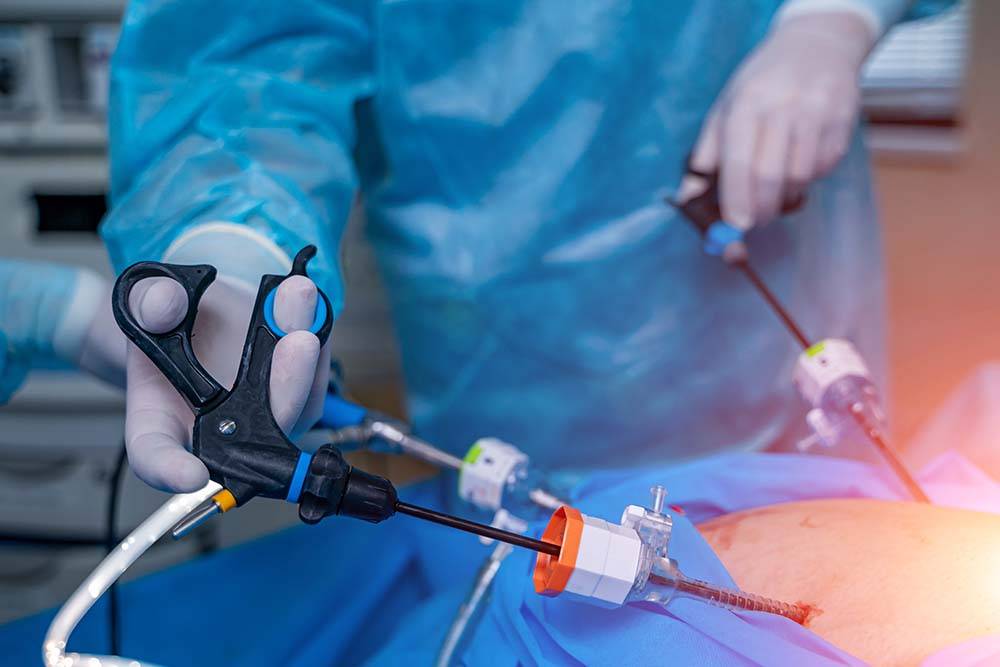Laparoscopy, also known as minimally invasive surgery, is a surgical procedure to examine and operate on the internal organs of the abdomen and pelvis through small incisions. This technique uses a laparoscope, a long, thin tube with a high-intensity light and a high-resolution camera at the front. The laparoscope is inserted through a small incision in the abdominal wall, and the camera transmits images to a video monitor, allowing the surgeon to see inside the body without making large incisions.

Laparoscopy is used for a variety of diagnostic and therapeutic procedures, including gallbladder removal, appendectomy, and hernia repair. It is favored for its ability to reduce postoperative pain, shorten hospital stays, and speed up recovery times.
How Laparoscopy Works
Laparoscopy works by using a laparoscope and specialized instruments to perform surgeries through small incisions. The procedure typically involves the following steps:
Preparation:
The patient is placed under general anesthesia. The surgical area is cleaned and sterilized to reduce the risk of infection.
Incision and Insertion:
A small incision, usually about 0.5 to 1.5 cm, is made near the navel. The laparoscope is inserted through this incision.
Gas Insufflation:
Carbon dioxide gas is pumped into the abdominal cavity to inflate it, which provides more space for the surgeon to work and improves visibility.
Visualization and Navigation:
he camera on the laparoscope transmits images to a monitor, allowing the surgeon to navigate and examine the internal organs.
Surgical Procedure:
Additional small incisions are made for inserting specialized surgical instruments. The surgeon performs the necessary procedure using these instruments.
Completion and Closure:
Once the procedure is completed, the instruments are removed, and the gas is released from the abdominal cavity. The incisions are then closed with sutures or surgical tape.
Application of Laparoscopy
Laparoscopy is widely used in various medical fields due to its versatility and effectiveness. Some common applications include:
Gynecology:
Laparoscopy is used to diagnose and treat conditions such as endometriosis, ovarian cysts, and fibroids. It is also used for hysterectomies and tubal ligations.
Gastroenterology:
Surgeons use laparoscopy to remove the gallbladder, treat hernias, and perform appendectomies. It is also used for weight loss surgeries like gastric bypass and sleeve gastrectomy.
Urology:
It is used for procedures such as nephrectomy (kidney removal), prostatectomy, and bladder surgery.
Oncology:
It is used for procedures such as nephrectomy (kidney removal), prostatectomy, and bladder surgery.
Pediatric Surgery:
It is used for various procedures in children, including appendectomies and treatment of congenital abnormalities.
Benefits of Cancer Surgery
Laparoscopy offers numerous benefits over traditional open surgery, making it a preferred choice for many surgical procedures. These benefits include:
Reduced Pain:
Smaller incisions result in less postoperative pain, reducing the need for pain medication.
Shorter Hospital Stay:
Patients often go home the same day or within 24 hours, compared to longer stays with open surgery.
Faster Recovery:
Smaller wounds heal quicker, allowing patients to return to their normal activities sooner.
Lower Risk of Infection:
The smaller incisions reduce the risk of wound infections and other complications.
Less Scarring:
The small incisions leave minimal scars, leading to better cosmetic outcomes.
Risks and Limitations
While advanced laparoscopy offers many advantages, it also comes with certain risks and limitations that need to be considered.
Infection:
Although rare, infections can occur at the incision sites or within the abdomen.
Bleeding:
There is a risk of bleeding from the incisions or internal organs.
Injury to Organs:
Accidental injury to nearby organs such as the intestines, bladder, or blood vessels can occur.
Anesthesia Risks:
General anesthesia carries its own set of risks, including allergic reactions and respiratory issues.
Conversion to Open Surgery:
In some cases, the procedure may need to be converted to an open surgery due to complications or visibility issues.
Preparation and Recovery
Proper preparation and post-operative care are crucial for the success of laparoscopy and the patient’s recovery.
Preoperative Evaluation:
A thorough medical history and physical examination are conducted. Blood tests and imaging studies may be required.
Fasting and Medication Adjustment:
Patients are usually instructed to fast for several hours before the procedure. Certain medications may need to be adjusted or temporarily discontinued.
Informed Consent:
The surgeon explains the procedure, risks, and benefits, and obtains the patient’s consent.
Postoperative Care:
After the procedure, patients are monitored in a recovery area. Pain management, wound care, and instructions for activity restrictions are provided.
